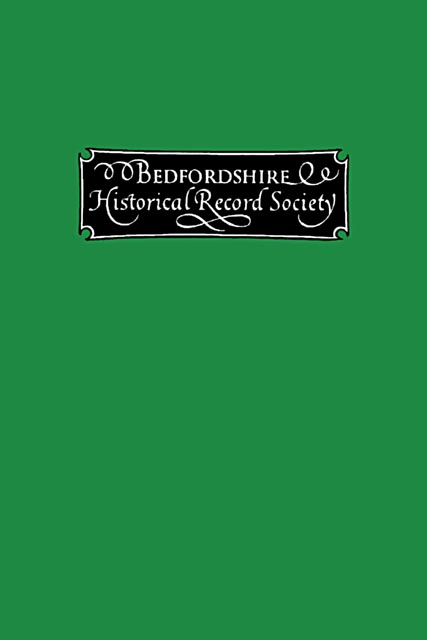Book contents
- Frontmatter
- Contents
- Abbreviations and Symbols
- The Shefford Beaker: circa 1800 B.C.
- The Morteyn Family in Bedfordshire
- The Shire of Bedford and The Earldom of Huntingdon
- The Later Descent of Wingate of Harlington
- The Disseisins by Falk de Breauté at Luton
- An Elizabethan Inquisition Concerning Bondmen
- Roll of The Justices in Eyre, 1240
- A List of Bedfordshire Apprentices: 1711 - 1720
- The Commune of Bedford
- Addendum I. “The Shire of Bedford and The Earldom of Huntingdon.”
- Addendum II. “The Disseisins of Falk de Breauté.”
- A Hand List of The Bedfordshire County Muniments : Prepared by The County Records Committee
- Index
The Commune of Bedford
Published online by Cambridge University Press: 14 July 2023
- Frontmatter
- Contents
- Abbreviations and Symbols
- The Shefford Beaker: circa 1800 B.C.
- The Morteyn Family in Bedfordshire
- The Shire of Bedford and The Earldom of Huntingdon
- The Later Descent of Wingate of Harlington
- The Disseisins by Falk de Breauté at Luton
- An Elizabethan Inquisition Concerning Bondmen
- Roll of The Justices in Eyre, 1240
- A List of Bedfordshire Apprentices: 1711 - 1720
- The Commune of Bedford
- Addendum I. “The Shire of Bedford and The Earldom of Huntingdon.”
- Addendum II. “The Disseisins of Falk de Breauté.”
- A Hand List of The Bedfordshire County Muniments : Prepared by The County Records Committee
- Index
Summary
The original text of the charter which is printed below has disappeared, like the other muniments of the Hospital of St. John at Bedford. But it still existed in the late sixteenth century, when a facsimile drawing of it was made for Sir Christopher Hatton, the famous Lord Chancellor of Queen Elizabeth's reign. With many similar drawings this facsimile is preserved in a large volume, quoted in the seventeenth century by Dugdale as Sir Christopher Hatton's ‘Book of Seals,’ and now in the possession of the Earl of Winchilsea and Nottingham at Haverholme Priory, Lincolnshire. This volume has recently been examined in detail by Canon C. W. Foster of Timberland, and the present document is one of the many important early medieval texts which he has discovered in it.
The peculiar interest of the charter lies in its last four words. It was made between 1179 and 1194, while William Ruffus was sheriff of Buckinghamshire and Bedfordshire, and it is therefore one of the earliest documents in which a group of burgesses is definitely described as a commune. There is evidence that the men of London had formed a ‘communa’ during the reign of Stephen, and in 1191 they formed a more famous and more permanent association of the same kind. But there does not seem to be any other known example of the application of the term ‘communa’ or ‘commune’ to an English burghal community at this early date. The phrase shows, at the least, that the men of Bedford in the reign of Henry II regarded themselves as in some especial sense a community—a body capable of exercising and defending by common action the privileges which were the exclusive possession of its members. So little is known of the stages by which English boroughs developed what may be called corporate feeling that the appearance of a commune of Bedford under Henry II becomes a notable event. For Bedford was not one of the greater English towns, and if the men of Bedford possessed at this date a communal sense strong enough to lead to their description as a ‘commune’ in a formal document of local provenance it can safely be assumed that the men of cities like Lincoln, Winchester, or York were also feeling their way towards corporateness.
- Type
- Chapter
- Information
- The Publications of the Bedfordshire Historical Record Society , pp. 177 - 180Publisher: Boydell & BrewerFirst published in: 2023

